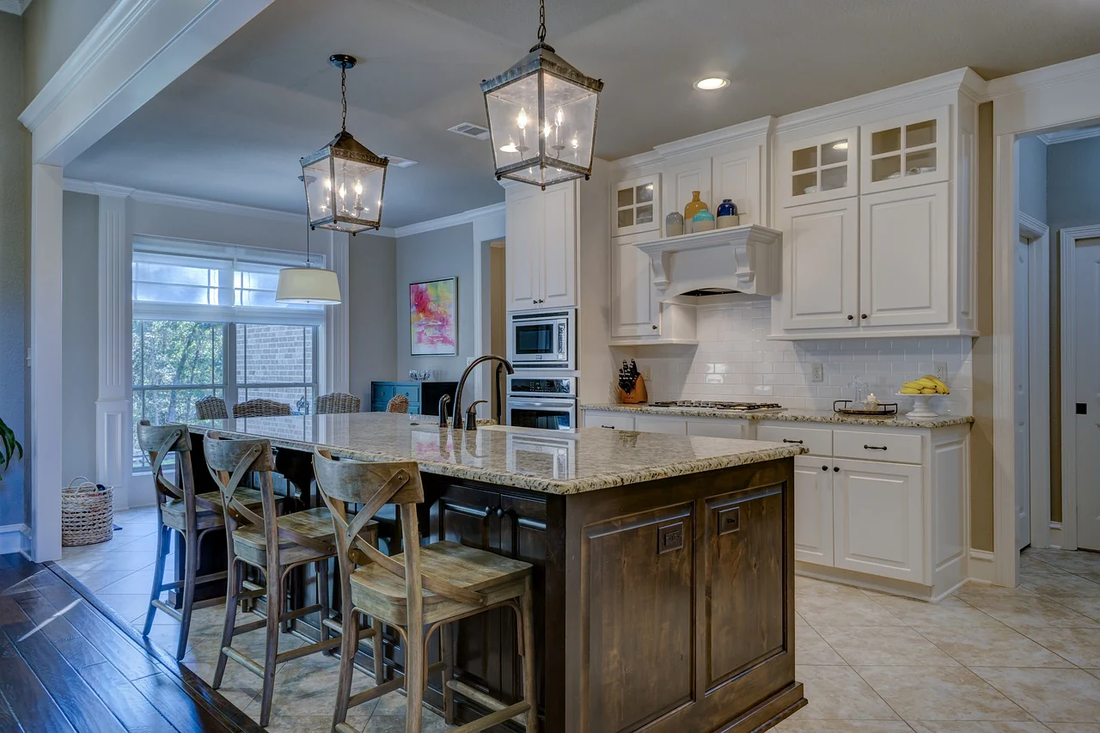
How to Choose the Right Lights for Your Home
Share
Lighting plays a pivotal role in transforming the look and feel of your home. It's not just about brightening up space; it's about creating an ambiance, highlighting decor, and enhancing functionality. Whether you're aiming for a cozy nook or a vibrant living room, understanding the different types of lighting and their purposes can help you make informed choices. In this guide, we’ll walk you through choosing lighting for your home - the essentials of ambient, task, accent, and natural lighting, ensuring your home is beautiful and functional.
Understanding Different Types of Lighting
Ambient Lighting
Ambient lighting, also known as general lighting, is the foundation of your lighting plan. It provides an overall glow that illuminates the entire room, allowing you to navigate safely and comfortably. Think of it as the base layer of lighting that sets the tone for your space. Ceiling fixtures, chandeliers, recessed lights, and wall-mounted fixtures are familiar ambient lighting sources.
When choosing ambient lighting, consider the room's size and purpose. A spacious living room might benefit from a grand chandelier, while a hallway could use a series of recessed lights. Ambient lighting should be bright enough to move around but not so intense that it feels clinical. Balancing the light temperature, aiming for warm hues in living areas and cooler tones in functional spaces like the kitchen and bathroom, is essential.
Task Lighting
Task lighting focuses on illuminating specific areas where you perform tasks, like reading, cooking, working, or applying makeup. The goal is to provide adequate light that reduces eye strain and enhances visibility. Desk lamps, under-cabinet, and vanity lights are typical examples of task lighting.
Task lighting is crucial in the kitchen. Under-cabinet lights can brighten countertops where you prepare meals, making it easier to see ingredients, recipes, and other kitchen decoration items. In the home office, a well-positioned desk lamp can reduce glare on your computer screen, enhancing productivity. For the bathroom, consider task lighting around mirrors to help with grooming tasks.
Accent Lighting
Accent lighting adds drama and focus to your home by highlighting architectural features, artwork, or unique home decor online items. It’s all about creating focal points and adding visual interest. Accent lighting typically uses brighter light than ambient lighting to draw attention to specific areas or objects.
Track lights, wall-mounted fixtures, and picture lights are popular choices for accent lighting. For example, you can use accent lighting to showcase a beautiful painting in your living room or to emphasize the texture of a stone wall. In the garden, outdoor lighting can highlight trees or water features, adding depth and dimension to your outdoor space.
Natural Lighting
Natural lighting is an often overlooked yet essential aspect of home lighting. Maximizing natural light enhances your home's aesthetic appeal and has health benefits, such as improving mood and boosting vitamin D levels. Large windows, skylights, and strategically placed mirrors can help flood your home with sunlight.
Incorporate natural lighting by keeping window treatments light and airy to allow maximum daylight penetration. In spaces where privacy is a concern, like the bathroom, consider using frosted glass or sheer curtains that let in light while maintaining privacy. In the kitchen and dining areas, position seating arrangements near windows to maximize the daylight.
Room-by-Room Lighting Guide
Every room in your home has its own unique lighting needs. You can enhance functionality and aesthetics by understanding how to tailor your lighting choices to each space. Here’s a comprehensive room-by-room guide to help you choose the perfect lights.
Select a Fixture Style
Before diving into the specifics of each room, consider your home's overall style and theme. Selecting fixtures, like recessed lighting, that complement your home decor can create a cohesive and visually appealing environment. For instance, modern homes might benefit from sleek, minimalist light fixtures, while traditional homes could feature ornate chandeliers and classic wall sconces.
Foyer
The foyer is the first impression of your home, so the lighting here should be welcoming and stylish. A statement chandelier or pendant light can create a stunning focal point. Consider adding wall sconces or a console table lamp to ensure even illumination if your foyer is large. Ensure the lighting is bright enough to safely navigate and find keys or other items.
Living Room
Layering different types of lighting is essential in the living room. Combine ambient lighting, such as ceiling fixtures or recessed lights, with task lighting, like floor and table lamps, for reading or other activities. Accent lighting can highlight artwork, architectural features, or unique home decor items. Dimmers are particularly useful in the living room to adjust the light intensity according to the activity or mood.
Kitchen
The kitchen is an activity hub that requires ambient and task lighting. Ceiling lights or recessed fixtures provide general illumination, while under-cabinet lights ensure work areas are well-lit for cooking and food preparation. Pendant lights above an island or dining area add both functionality and style. For added convenience, consider installing dimmable lights to adjust the ambiance for different occasions.
Dining Room
The proper lighting can enhance the dining experience in the dining room. A chandelier or pendant light over the dining table is a classic choice. Ensure the light fixture is sized appropriately for the table and the room. Additional lighting, such as wall sconces or buffet lamps, can create a warm and inviting atmosphere. Using dimmable lights allows you to adjust the brightness to suit the occasion, from bright family dinners to intimate gatherings.
Bedroom
The bedroom should be a relaxing retreat, so soft, ambient lighting is vital. Combining ceiling, bedside, and floor lamps can create a cozy and functional space. Task lighting, such as reading lamps, should be adjustable and positioned to reduce glare. Accent lighting can highlight artwork or architectural details, adding to the room's ambiance.
Bathroom
Bright and even overhead lighting is essential for grooming and applying makeup in the bathroom. Overhead lights, combined with task lighting around mirrors, work best. Ensure fixtures, including bathroom decor items, are moisture-resistant to withstand the bathroom environment. Add accent lights around the bathtub and shower area for a spa-like feel.
Office
Good lighting is crucial in a home office to maintain productivity and reduce eye strain. A mix of ambient or task lighting is ideal. Overhead lights provide general illumination, while a desk lamp focuses light where you need it most. Natural light is also beneficial, so position your desk near a window. Consider using adjustable and dimmable lights to control the lighting throughout the day.
Choosing the Right Bulbs
Choosing the correct light bulb is just as important as selecting the fixtures. Different light bulbs can affect the room's ambiance and functionality. Let’s explore the options.
LED vs. Incandescent vs. CFL
Each bulb type has advantages and drawbacks. LEDs are energy-efficient and long-lasting, making them a popular choice. Incandescents provide a warm, familiar light but consume more energy. CFLs are more efficient than incandescents and offer an excellent middle ground. When selecting bulbs, consider the purpose of the room and the type of lighting needed.
Understanding Lumens and Kelvins
Lumens measure a bulb's brightness, while Kelvins indicate its color temperature. Choose bulbs with lower Kelvins (around 2700K) for cozy, warm lighting. Higher Kelvins (5000K and above) are suitable for bright, cool light. Understanding these metrics helps you select the right bulb for each room’s needs.
Smart Bulbs and Dimmers
Smart bulbs and dimmers offer flexibility and control over your home lighting. Smart bulbs can be controlled via apps, allowing you to adjust the brightness and color remotely. Dimmers let you change the light intensity to suit different activities and moods, enhancing functionality and ambiance.
Conclusion
Lighting is crucial in "how to decorate your home" beyond mere functionality. You can create a harmonious and inviting environment by understanding the different lighting types and choosing the right fixtures and bulbs for each room. Remember, the key to successful lighting is layering and flexibility, allowing you to adjust and adapt to different needs and preferences. So, start illuminating your home beautifully and see the transformation it brings.
